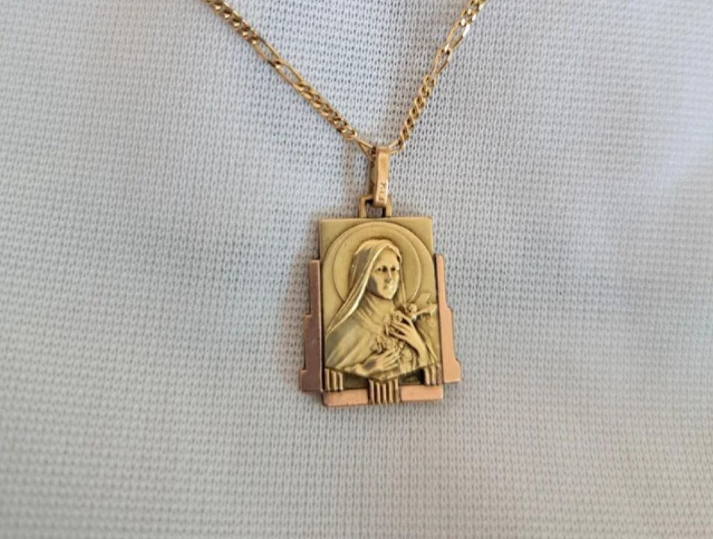Thrifting can be a boom or a bust, depending on where you shop. One Reddit user found a treasure within the shelves of their local thrift store — and started a movement to try to find the family the piece originally belonged to.
The photos, shared on the r/ThriftStoreHauls forum, depict a 14K gold necklace with the inscription "Louis et Yvonne 13-10-1944" on the back. The other side of the pendant features the Roman Catholic St. Thérèse of Lisieux (France).
"14K gold, written on the pendant 'Louis et Yvonne 13-10-1944'," wrote the poster. "This is soo beautiful 🥹 I wish I could find their offsprings and send it to them!!"

Recycling jewelry by selling it or donating it to a store is one of the ways to moderate the need for new gold to be mined, refined, and shaped into jewelry. The extraction of precious metals from the earth releases polluting air, uses up water, and potentially has implications for human rights and ethics depending on the region and practices where the metals were sourced.
By recycling and upcycling jewelry, people reduce their environmental impact while getting high-quality antique pieces.
If you have jewelry sitting around your house from prior generations, consider donating the pieces to a cause you care about. Some charities will take in old jewelry and use the profits to advance philanthropic missions. Some will even offer tax deductions to eligible donors.
The constant movement of jewelry between owners and stores can, however, result in pieces like the pendant posted on the forum getting lost in the shuffle. This good samaritan is trying to reunite the piece with the family of its original owners — and seeking the help of the internet.
Reddit users shared their ideas for how to find the descendants of the pendant in the comments.
One user noted: "For those unfamiliar, the text is hand engraved. No machine involved, just hand tools and the knowledge of the jeweler," which may point to the jeweler responsible for crafting the piece.
Another user shared that the date and the possible connection to France may suggest that the piece was one of the few engraved during wartime — which adds to its uniqueness. They hypothesize that it may have been traded for food or supplies upon immigration to the United States.
Join our free newsletter for easy tips to save more, waste less, and help yourself while helping the planet.









